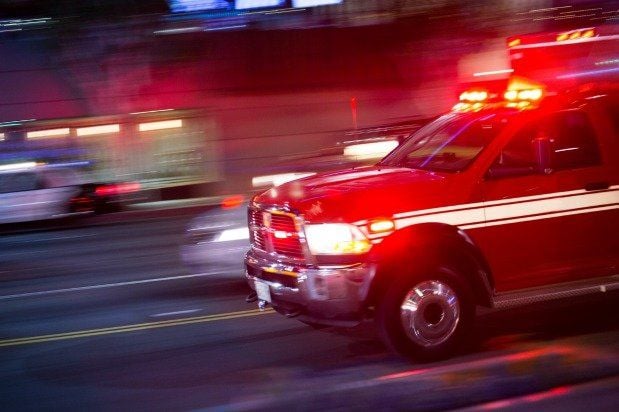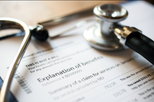Between 2010 and 2019, U.S. opioid-related deaths more than doubled - from just over 21,000 annual deaths in 2010 to nearly 50,000 deaths in 2019. [1]
Given that recently released data shows an almost 30% increase in overdose deaths [2] during the height of the COVID-19 pandemic - between December 2019 and December 2020 - there’s reason to worry that opioid deaths will mirror that trend. So, it’s fortunate we have an available solution to reverse opioid overdoses. It’s called Naloxone, and the branded version, known as Narcan, was FDA-approved in November 2015. In this article, we’ll discuss how Narcan works to restore breathing after an opioid overdose and if the availability of this drug tells us anything about the trajectory of the opioid epidemic.
How Narcan Works to Prevent Opioid Deaths
To understand how Narcan works, it helps to first learn how opioids work.
Opioids like heroin, morphine, or oxycodone attach to the brain’s opioid receptors and activate them to produce chemicals that allow the individual to feel calm and euphoric. In the case of opioid overdose, the body goes into overdrive and slows down respiration to a dangerous degree. Without enough oxygen, the individual will first lose consciousness and then die.[3]
Narcan is known as an opioid antagonist, a superhero of sorts that can attach to those same opioid receptors that were affected when the individual used opioids. Narcan blocks the action of those opioids and reverses their effect, and in approximately five minutes, the individual will regain consciousness.[3]
How is Narcan Administered?
The two FDA-approved forms of Narcan can be administered either through injection or as a nasal spray. The injectable form can be injected into a muscle or a vein, but a trained medical professional should administer it.
The nasal spray is easier to use and is administered into one nostril while the individual lays on his or her back. Note that non-FDA-approved nasal sprays kits are available (also called improvised nasal sprays), but they aren’t absorbed into the bloodstream as effectively as the approved version.[4] It’s also reported that these improvised kits may require training to assemble and are especially difficult to put together under pressure of an emergency.
What Happens After an Individual is Given Narcan?
Even though it takes only a few minutes to regain consciousness after taking Narcan, the complete process of reversing the opioid overdose can take anywhere from 30 to 90 minutes.[3] Sometimes an individual will require multiple doses of Narcan to eliminate all the effects of the overdose.
After being treated with Narcan, the individual must be closely observed for a couple of hours to ensure that breathing has normalized. Also, those who have developed a physical dependence on opioids may experience withdrawal symptoms after taking Narcan. It’s best for the individual to be monitored by medical professionals who can provide symptom relief in the form of approved medications, such as methadone or buprenorphine.[5]
The Blessing and the Curse of Narcan
Naloxone drugs like Narcan can prevent deaths from opioid overdose, but they have no effect on opioid addiction.[3] It’s possible that the existence of a medication like Narcan may give some who are opioid-dependent a reason to avoid or prolong getting help because they know there’s a treatment available to save their lives if they happen to overdose.
For those who have been saved by how Narcan works to reverse an overdose, a near-death experience may motivate them to try to quit on their own. But without the support of an experienced team of addiction experts, attempts to quit may prove too difficult, and the individual will likely return to opioid use.
Beyond Narcan: How to Successfully Recover from an Opioid Use Disorder
Narcan can save lives, but addiction doesn’t disappear once the drugs are eliminated from the body.
Unless the individual learns how to manage life without the use of opioids, relapse is an almost inevitable outcome.
Medication-assisted therapy (MAT) combines the use of medicine, counseling, and various behavioral therapies to offer a holistic or “whole-patient” approach to addiction treatment and recovery. Medications can ease withdrawal symptoms immediately after stopping opioid use. But after the medication course is completed, individuals must take the next steps on their path to sobriety. Counseling and therapy are effective methods for understanding the root causes of the addiction, changing attitudes and behaviors about using, and learning the life skills necessary to cope without drugs.[6]
Rehab programs that use MAT can take place in either inpatient or outpatient settings, and treatment options are customized according to the unique needs of the individual. These programs also connect the patient to a support network, which is invaluable for accountability and remaining focused on goals.
Overall, MAT programs have been found to decrease opiate use, increase retention, help patients comply with the law, and assist them with finding and holding onto a job.[7] It’s not easy to recover from opioid use and maintain sobriety. But with a knowledgeable and supportive network in place, there’s a greater chance of achieving long-term sobriety.
Sources:
[1] https://www.drugabuse.gov/drug-topics/trends-statistics/overdose-death-rates
[2]https://www.thelancet.com/journals/lancet/article/PIIS0140-6736(21)01653-6/fulltext
[3] https://www.drugabuse.gov/publications/drugfacts/naloxone
[4]https://pubmed.ncbi.nlm.nih.gov/30861160/
[6] https://medlineplus.gov/opioidmisuseandaddictiontreatment.html








